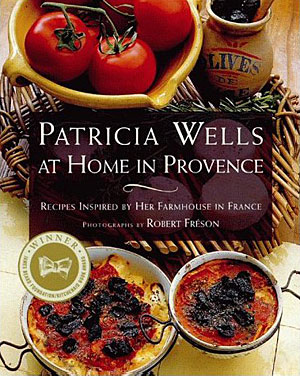I just returned from a week-long professional course on sous-vide, a method of cooking vaccum-packed foods at very low temperatures to capture maximum flavor, texture, even color from an ingredient. And I’ll never be the same in the kitchen.
Sous vide has been around for more than 30 years (when I worked with chef Joel Robuchon at Jamin in the early 1980’s, he was already experimenting with the process) but is only beginning to catch on for the home cook.
During the course, given at CREA (Centre de Recherche et d’Etudes pour l'Alimentation) in Paris’s 14th arrondissement, we cooked salmon and cod, beef and lamb, kidneys and sweetbreads, pork roast, chicken breasts and thighs, duck breasts and foie gras, lobster and scallops, even an entire turkey in honor of Thanksgiving (see photo) Every vegetable imagineable – green beans, potatoes, carrots, artichokes, fennel, asparagus – was subjected to our experiments. We even did tests with fruits, ranging from apples to pinapple to watermelon.
Sous vide (French for “under vacuum”) or cooking food at low temperature in a water bath, is practiced by a number of chefs world wide, including Robuchon, Thomas Keller, Ferran Adriá, Michel Richard, and Heston Blumenthal. Our CREA professor Bruno Goussault trained them all, so we knew that we were in good hands.
What I learned is that sous vide is NOT a replacement for traditional cooking methods – steaming, braising, searing roasting -- but an additional way to cook. Not every food improves with sous vide cooking but many ingredients do. Because ingredients are cooked to a perfect “core” temperature, meat and poultry remain perfectly ,evenly cooked throughout, with a texture that is unachievable in traditional cooking methods. Flavors that would normally evaporate into your kitchen, are preserved in that plastic bag. Artichokes cook without oxidyzing; a chicken breast comes out perfectly, evenly cooked, the same moist and appealing uniform texture throughout. I also learned that many items – particulary green beans and most green vegetable – are not suited to sous vide cooking for there is no way to maintain their brilliant green color. I also learned that this is not a process that is about convenience but rather precision, resulting in flavors that are more pure, more intense.
In future blogs I will go offer specific recipes and suggest how to purchase essential equipment (thermometers, water baths, and vacuum sealers) but for now I want to pass along a fabulous cooking tip that does not involve the sous vide process.
Whenever we cook salmon, a thick, viscous, white liquid (the albumin in the fish) appears on the surface of fish once cooked. There is a way to block the alumin, and that’s salt. After soaking the fish in a simple salt brine (3/4 cup fine sea salt dissolved in 1 quart of water), cook the fish in your method of choice. You’ll be amazed! Here’s a favorite recipe for salmon:
Salt-Brined Six-Minute Salmon with Rosemary
A preferred method for cooking fish is steaming. I like to steam fish on a bed of fragrant herbs --- rosemary, dill, thyme, or mint –all of which infuse the fish with their heady perfume. Garnish the fish with more minced fresh herbs, a drizzle of almond or pistachio oil, and a few brine-cured black olives. Soaking the salmon in brine blocks the albumin, or white substance that rises to the surface of the fish.
Equipment: A tweezers; a steamer; 4 warmed dinner plates.
2 pounds fresh salmon filet, skin intact
3/4 cup fine sea salt
Several stalks of fresh rosemary (or sprigs of dill, thyme, or mint)
Finely minced rosemary (or herb of choice) for garnish
Several drops of best quality almond oil or pistachio oil (such as Leblanc)
Fleur de sel de Guérande
16 olives brine-cured black olives
- Run your fingers over the top of the salmon fillet to detect any tiny bones that remain in the salmon. With a tweezers, remove and discard the bones. Cut the salmon into four even, 8-ounce portions.
- In a large bowl, combine the salt and 1 quart of water and stir to dissolve the salt. Immerse the fish in the brine and set aside at room temperature for 10 minutes.
- Bring 1 quart of water to a simmer in the bottom of the steamer. Place the herbs on the steaming rack. Place the fish on top of the herbs. Place the rack over simmering water, cover, and steam just until the fish is cooked through, about 6 minutes.
- Remove from the heat and allow the fish to rest for 2 minutes. Carefully transfer the fish to warmed dinner plates. Garnish with herb of choice, a drizzle of the oil, and a sprinkling of fleur de sel. On the side, garnish with olives and serve.
4 servings















